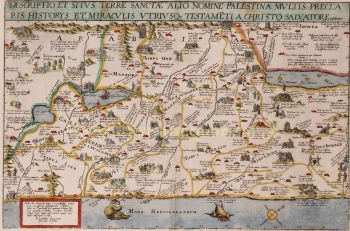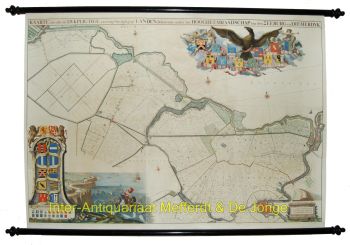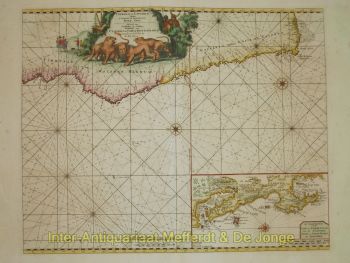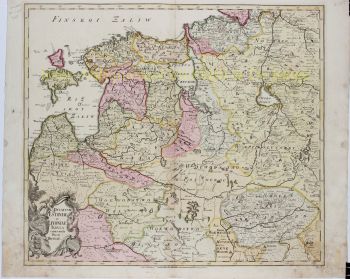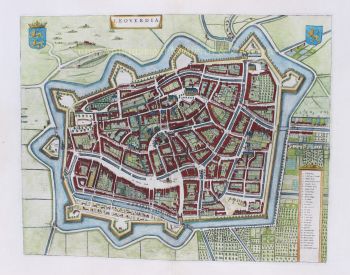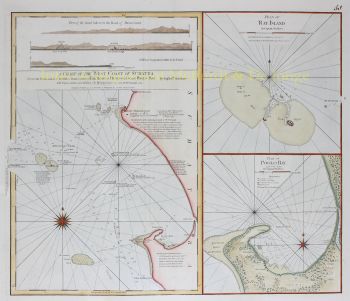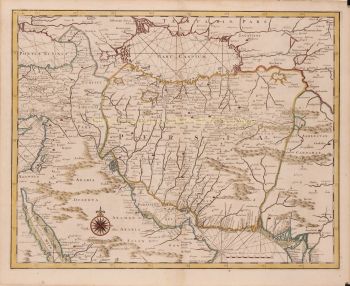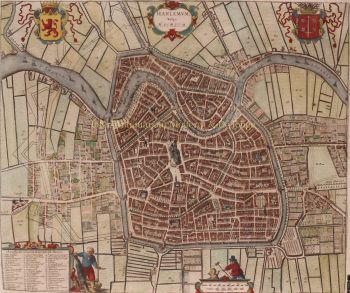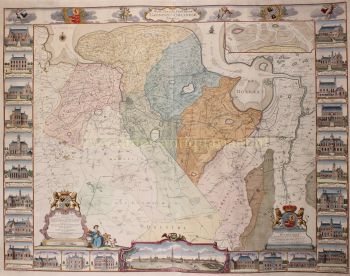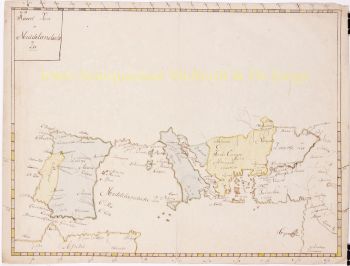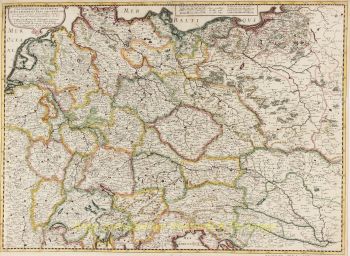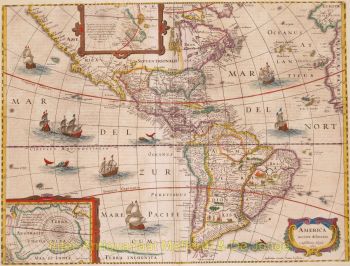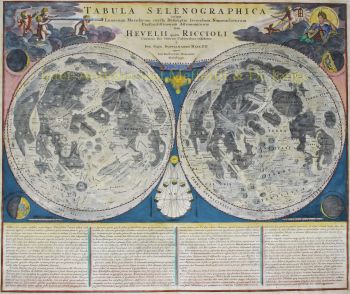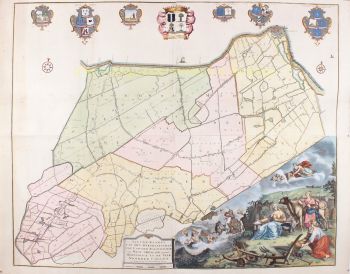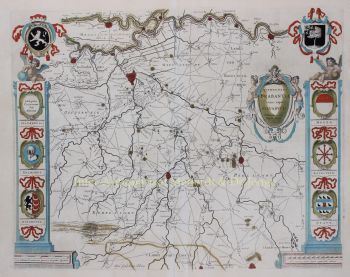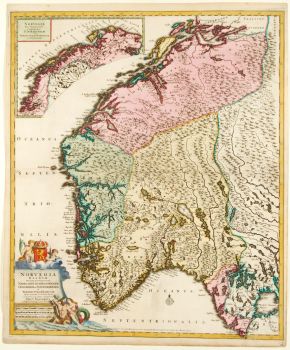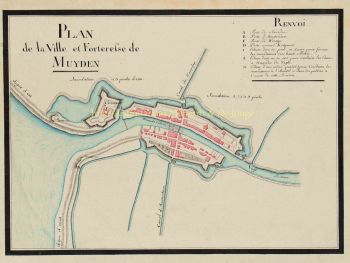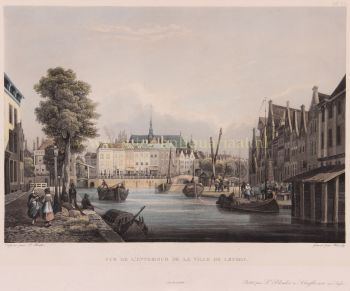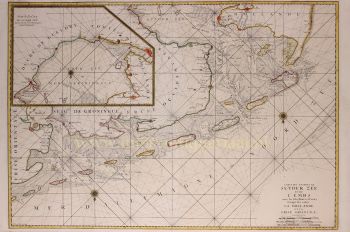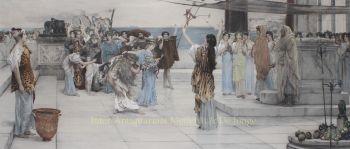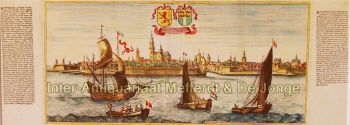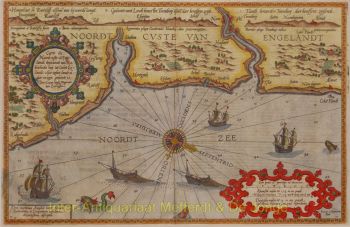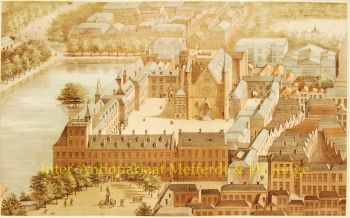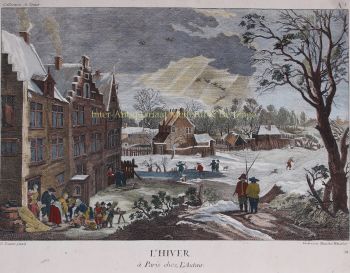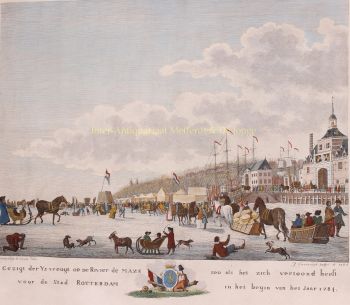Japan kaart 1697
Durant
€ 2.650
Inter-Antiquariaat Mefferdt & De Jonge
- Over kunstwerkColoured copper engraving assembled from two sheets by J. Durant after a drawing of Jean-Baptiste Tavernier, 1679. Plate size: 52 x 77 cm. The map occurs only in the first edition of Taverniers "Recueil de plusieurs relations". For later editions and/or translations the map was made smaller. It shows many unusual comments about Japan. It contains legends about the nature of the country, e.g. where gold is mined. Okasaki is said to have the most beautiful women. In Lake Biwa one can catch lots of salmon. Worthless youths are sent to an island off Kyushu, where they have to work etc. From a cartographic perspective the most important innovation is the inclusion of the route of the Dutch. At Firando it states that this where they had stayed initially. At Kisma "" a different name for Deshima "" it says that this is where the Dutch are. Also some Dutch ships are depicted. The map is handsomely framed using the highest standards (UV protective glass, acid free paper, wooden, i.e. strong and water resistant, reverse side). Jean-Baptiste Tavernier (1605 - 1689), was born in Paris, where his father Gabriel and uncle Melchior, protestants from Antwerp, pursued the profession of geographers and engravers. The conversations he heard in his father's house inspired Tavernier with an early desire to travel, and in his sixteenth year he had already visited England, the Low Countries and Germany. He was eager to visit the East; and he found the opportunity to join two French fathers, M. de Chapes and M. de St Liebau, who had received a mission to the Levant. In their company he reached Constantinople early in 1631, and then proceeded via Erivan to Persia. His farthest point in this first journey was Isfahan; he returned by Baghdad, Aleppo, Alexandretta, Malta and Italy, and was again in Paris in 1633. In September 1638 he began a second journey (1638-43) continuing to India as far as Agra and Golconda. His visit to the court of the Great Mogul and to the diamond mines was connected with the plans realised more fully in his later voyages, in which Tavernier travelled as a merchant of the highest rank, trading in costly jewels and other precious wares, and finding his chief customers among the greatest princes of the East. The second journey was followed by four others. In his third (1643-49) he went as far as Java, and returned by the Cape; but his relations with the Dutch proved not wholly satisfactory, and a long lawsuit on his return yielded but imperfect redress. In his last three journeys (1651-55, 1657-62, 1664-68) he did not proceed beyond India. The details of these voyages are often obscure; but they completed an extraordinary knowledge of the routes of overland Eastern trade, and brought the now famous merchant into close and friendly communication with the greatest Oriental potentates. They also secured for him a large fortune and great reputation at home. He was presented to Louis XIV, in whose service he had travelled sixty thousand leagues by land, received letters of nobility and in the following year purchased the barony of Aubonne, near Geneva. In 1662 he had married Madeleine Goisse, daughter of a Parisian jeweller. Thus settled in ease and affluence, Tavernier occupied himself, as it would seem at the desire of the king, in publishing the account of his journeys. He had neither the equipment nor the tastes of a scientific traveller, but in all that referred to commerce his knowledge was vast and could not fail to be of much public service. He set to produce "Le Six Voyages de J. B. Tavernier"? in 1676 and supplemented it with the "Recueil de Plusieurs Relations"? in 1679. This last contains an account of Japan, gathered from merchants and others. Reference: Walter 35 u. OAG 40; Campbell 27; Cortazzi p. 46/7 and pl. 71. Price: Euro2.650,- (excl. VAT/BTW, incl. frame)
Bent u geïnteresseerd om dit kunstwerk te kopen?
Artwork details
Categorie
Related artworks
- 1 - 4 / 24
- 1 - 4 / 12


